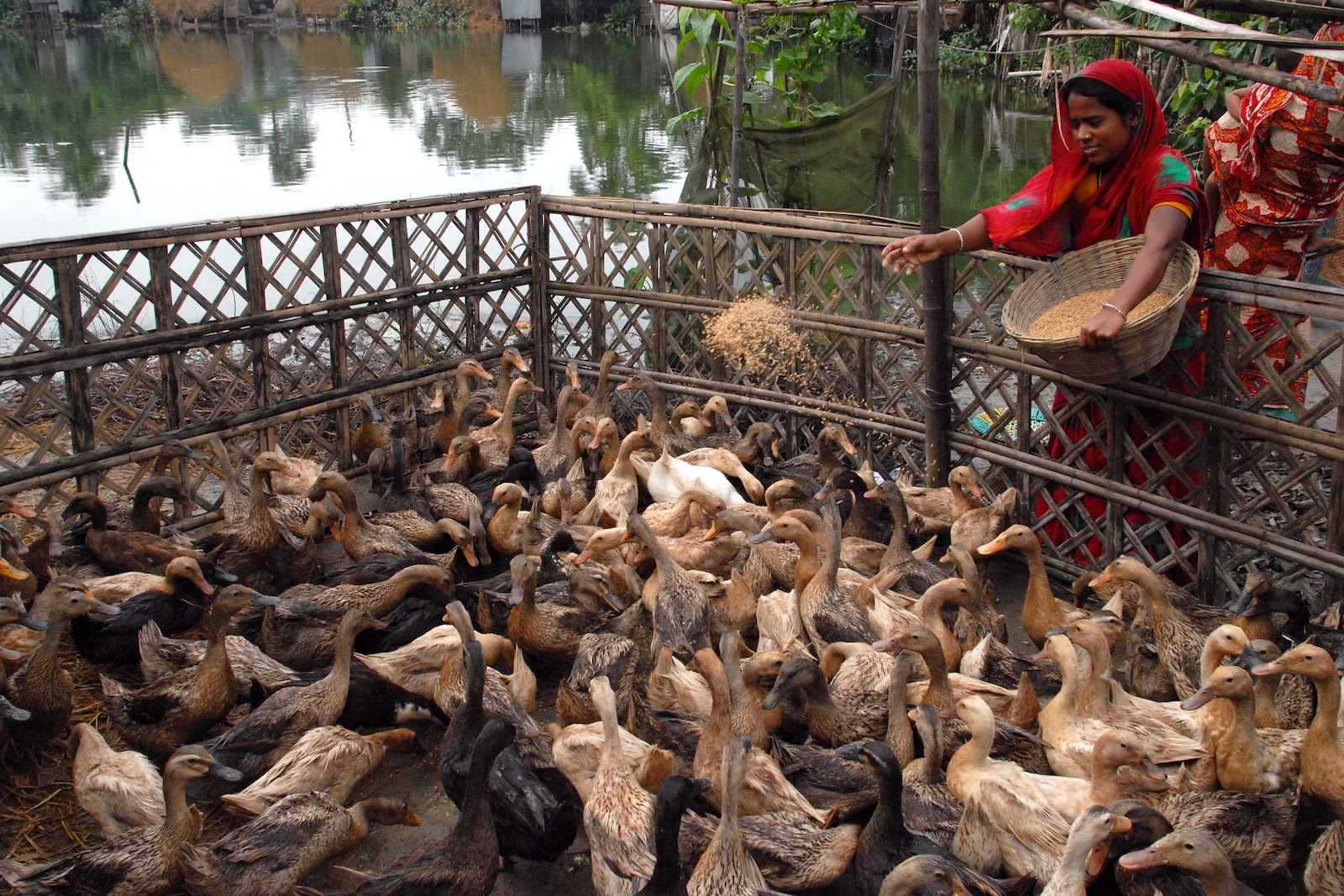
Health
One Health Concept Guides Colorado State Research
As the world has coped with increasing zoonotic disease outbreaks like avian influenza and the Zika and Ebola viral epidemics, scientists and practitioners of global health have begun experimenting with a new approach based on the observed interdependence of human, animal, and ecosystem health. Over time, a new global strategy is emerging that recognizes the interplay between diseases in animals and humans and how they are profoundly affected by the environment and climate.
There have been groups that have forged important paths in this new strategy such as the “One Medicine” concept that advocated combining human and veterinary medicine to fight zoonotic outbreaks and the U.S. Department of Defense’s Nunn-Lugar Cooperative Threat Reduction Program, and USAID programs that recognized the need to integrate into growing the global health infrastructure.
There is a growing understanding of the importance of a One Health approach to health resilience. The CDC recently adopted a One Health initiative, which is described as “a collaborative, multisectoral, and transdisciplinary approach – working at the local, regional, national, and global levels.” Its goal is “achieving optimal health outcomes recognizing the interconnection between people, animals, plants, and their shared environment.” As such, One Health moves beyond science and impacts law, ethics, science communications, and now more recently into the political realm (health, agriculture, aquaculture, land management, urbanism, and biological conservation).
The CDC states that “many factors have changed interactions between people, animals, plants, and our environment” in recent years. Reasons for this include the dramatic growth in human populations (from 1.8 billion in 1920 to 7.9 billion in 2020), changes in climate and land use (including deforestation and intensive farming), and industrialization that has brought increased mobility for humans, animals, and animal products.
Researchers at Colorado State University (CSU) now employ the One Health principles in their work in combating endemics and new or emerging zoonotic diseases that can spread between animals and people. “The CSU One Health program,” says Vice President for Research Alan Rudolph, “rests on the fundamental principle of building health resilience through the integration of animal, human and environmental health.”
In a recent interview, Rudolph explained that the CSU One Health program brings together different disciplines to attack challenging problems in health including infectious and chronic diseases and the relationships between the environment, climate, and health. “The program includes unique assets that allow us to address diseases in wildlife and companion animals appreciating the close connections between companion animals and human health.”
The One Health Institute is under the direction of Dr. Sue VandeWoude, a national academy cat virologist. One Health Institute’s programs apply these foundational principles in building a One Health resilience from regional to global projects in enhanced surveillance and countermeasures for improved outcomes of disease, a better understanding of the environmental factors in health outcomes, and how to integrate data and improve prediction for large scale events such as outbreaks and pandemics. CSU has already demonstrated leadership using these principles in the current COVID pandemic and expanding their application in other global health challenges. One example is CSU’s efforts to apply one health principles in Guatemala where a comprehensive approach to studying a village’s human, animal, and environmental health is being applied. This approach knows no boundaries and is also being applied in Fort Collins, Colorado in the management of the seasonal West Nile Virus.
According to Rudolph, who formerly worked on pandemic response for the Departments of Defense and Homeland Security, “We can no longer afford to respond to individual outbreaks to develop individual responses. We work to solve complex problems at the intersection of humans, animals, and the environment through research, training, outreach, and advocacy. We seek to build a resilient infrastructure to respond to the increasing frequency of these outbreaks.”
New research at CSU has focused on understanding disease tolerance and resistance in the host (the infected human or animal) and developing antivirals and anti-bacterials that protect broadly against multiple strains of a bacteria or virus or multiple viruses and bacteria as they emerge. One group of CSU researchers, for example, studied over 250,000 samples from senior living facility residents and staff in an effort to determine whether we can effectively treat infected people without knowing the exact pathogen (usually a new variant of an existing class of pathogens).
CSU’s prior participation in the fight against Avian influenza, the Zika, and Ebola outbreaks, and other animal-borne diseases has informed the university’s work on coronavirus protections. CSU researchers have even set up artificial barnyards and wet markets inside specialized containment laboratories to study transmission in suspected areas of disease transmission. The science translates into products as other CSU scientists are innovating new diagnostic tools to rapidly detect outbreaks and new ways to easily and regionally manufacture a vaccine or therapeutic to treat the disease. This is a much-needed paradigm shift in rapid response and regional support for the treatment of animals or people.
The zoonotic interplay of animal and human disease has an important player in the mosquito, flea, and tick vectors, other hosts, and reservoirs of disease including the bat which has generated two SARS outbreaks including the most recent COVID pandemic. Rudolph says that CSU had a rich history and deep bench of faculty who study these vectors and hosts under very safe conditions in unique university laboratory facilities that have very high levels of containment. In 2019, CSU opened a new building and Center on Vector-Borne Disease Research and will open a new facility to expand its studies on bats. Other CSU researchers have studied coronavirus in camels, hantaviruses in rabbits and rodents, and even anthrax in cattle. One goal of this research is to identify and then seek ways to interdict the zoonotic channel within a disease.
Another major concern, says Rudolph, is safeguarding health data in U.S. laboratories from increasing cyber threats. Ransomware attacks on hospitals and medicine manufacturers pose just one of these threats; there are plenty of other ways that cyber adversaries can create bad outcomes, even by manipulating data results to changing formulas for vaccines. “Protecting life sciences data is even more difficult than protecting nuclear and chemical data, Rudolph says. “Anyone with an incubator can grow a bacteria, but not everyone can create a nuclear reactor.”
One Health, says the CDC, has been gaining recognition worldwide as an effective way to fight health issues, including zoonotic diseases, at the human-animal-environment interface. Successful public health interventions require the cooperation of human, animal, and environmental health partners, as well as the participation of law enforcement, policymakers, agriculture, communities, and even pet owners.
In a 10-year critique of the One Health concept, French researchers concluded that the long-term success of One Health requires breaking down the interdisciplinary barriers that still separate human and veterinary medicine from ecological, evolutionary, and environmental sciences. The French team recommended that researchers provide evidence on the added value of the One Health approach for governments, researchers, funding bodies, and stakeholders and building a new interface with human, social, and legal sciences.
Colorado State, like the CDC, uses the One Health approach and therefore provides a living laboratory for evaluating the concept’s long-term success. The university already involves experts in human, animal, environmental health, and other relevant disciplines and sectors in monitoring and controlling public health threats and in learning about how diseases spread among people, animals, plants, and the environment.
The CSU program involves partnerships with the federal government, other academic and research institutions, the private sector, and university students and faculty. Rudolph admits that the unique work at CSU is “an important component of a national response” to the challenges presented by zoonotic diseases. And he is confident that the One Health approach is essential to solving challenges presented by future zoonotic outbreaks. The future is literally at stake here.

